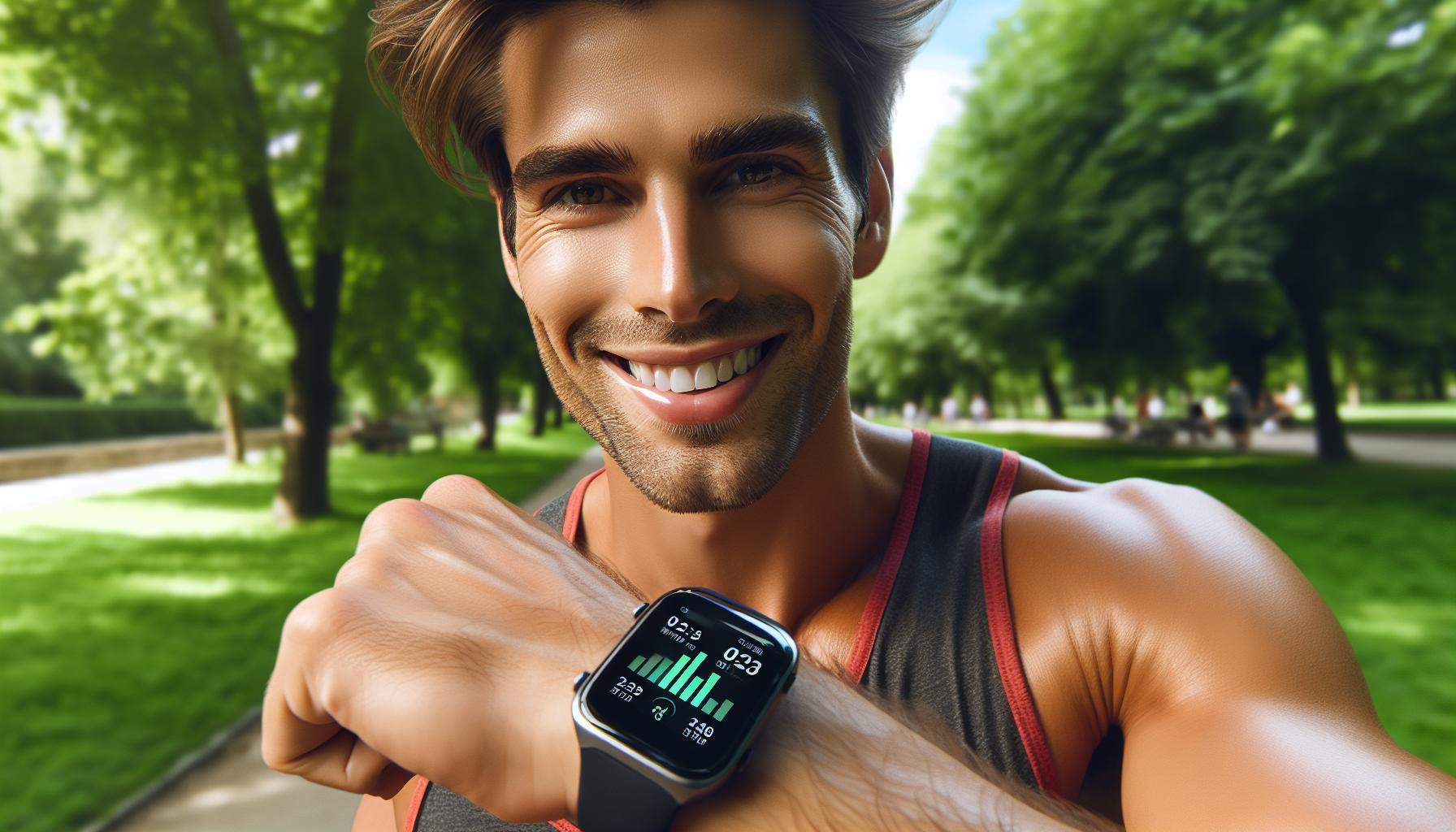Wearable tech has come a long way since the days of clunky fitness bands that barely tracked steps. Today, it’s all about sleek designs and groundbreaking features that can make anyone feel like they’re living in a sci-fi movie. From smartwatches that monitor heart rates to glasses that can translate languages in real-time, these gadgets are not just for tech enthusiasts anymore—they’re for everyone who wants to add a sprinkle of magic to their daily routine.
Overview of Wearable Tech
Wearable technology has rapidly evolved, transforming from simple fitness bands to sophisticated devices. Today’s smartwatches seamlessly integrate health tracking features, providing real-time data, including heart rate, sleep quality, and activity levels. Many smartwatches now support notifications and apps, creating a multifunctional experience for users.
Fitness trackers, specifically designed for active lifestyles, monitor steps, distance, and calories burned. They often include reminders for users to move, promoting overall well-being. These trackers cater to various fitness levels, making them appealing to casual exercisers and dedicated athletes alike.
Recent advancements in smart glasses, such as augmented reality capabilities, enhance how users interact with their environment. These glasses offer language translation in real time, allowing for easier communication in diverse settings. Users can access navigation information hands-free, improving convenience while traveling or commuting.
Health-monitoring wearables, including specialized devices for chronic conditions, contribute to proactive health management. For example, continuous glucose monitors assist diabetics by tracking blood sugar levels throughout the day. Such devices enable users to make informed decisions regarding their health in a timely manner.
Wearable tech’s integration with mobile applications further enhances user experience. These apps sync data, providing comprehensive overviews of physical activity, health metrics, and even sleep patterns. The ongoing synergy between wearables and smartphones signals a future where connectivity and data-driven insights become essential in daily life.
Innovations in materials and design lead to more stylish wearables. Incorporating aesthetics, manufacturers focus on comfort and versatility, appealing to broader demographics. The current range of options fosters a culture of health awareness and encourages individuals to adopt healthier lifestyles.
Types of Wearable Tech

Wearable technology comprises several categories, each serving distinct functions and purposes. These devices enhance everyday life and support various user needs and preferences.
Fitness Trackers
Fitness trackers monitor physical activity and motivate users to maintain an active lifestyle. Devices like Fitbit and Garmin offer features such as step counting, sleep tracking, and workout logging. Many models come equipped with heart rate monitors and support workout-specific modes for diverse activities. Additionally, users receive insights through connected apps, encouraging goal-setting and progress tracking.
Smartwatches
Smartwatches combine the functionality of traditional watches with advanced features, offering notifications, fitness tracking, and apps in one device. Popular brands such as Apple and Samsung provide customizable watch faces and health insights. These watches often enable users to respond to messages, make calls, and control smart home devices directly from their wrists. Many models support third-party apps, enhancing the user experience further.
Health Monitoring Devices
Health monitoring devices focus on proactive health management and chronic condition support. Continuous glucose monitors and wearable ECG monitors exemplify advancements in this category. These devices allow users to track vital health metrics in real-time, often sending alerts to connected smartphones. They enable better management of conditions like diabetes and heart disease, encouraging informed health decisions.
Latest Advancements in Wearable Tech

Recent advancements in wearable technology continue to revolutionize user experience. Innovations in design and functionality leave consumers excited about their options.
Integration with AI and Machine Learning
AI and machine learning transform wearable tech capabilities. These technologies allow devices to adapt to user habits and provide personalized insights. For instance, smartwatches can analyze heart rate data to detect irregular patterns, alerting users when necessary. Additionally, fitness trackers use AI algorithms to tailor workout suggestions based on performance trends. Such advancements create an interactive experience tailored specifically for each user’s needs.
Enhanced Health Monitoring Features
Health monitoring features expand significantly in today’s wearables. Devices now support advanced metrics such as blood oxygen levels and stress detection. Smartwatches equipped with ECG and heart rate monitoring help detect potential cardiac issues more effectively. Continuous glucose monitors have improved accuracy and connectivity, giving users real-time access to vital health data. This growth in capabilities empowers users to take control of their health more proactively.
Long Battery Life Innovations
Innovations in battery technology contribute to longer-lasting wearable devices. New energy-efficient components and smart power management extend battery life substantially. Some smartwatches now offer up to two weeks of usage on a single charge, minimizing the need for frequent recharging. Enhanced battery capabilities not only improve user satisfaction but also make devices more reliable for continuous health monitoring. These advances signify a shift toward more efficient and user-friendly wearables.
Impact on Health and Lifestyle

Wearable technology significantly influences health and lifestyle choices. Devices like fitness trackers and smartwatches deliver valuable insights to users, promoting healthier habits and better fitness routines.
Benefits for Fitness Enthusiasts
Fitness enthusiasts experience numerous advantages from wearable tech. Enhanced features, such as heart rate monitoring, provide real-time data during workouts. Accurate step tracking helps individuals set and achieve daily activity goals. Customizable fitness plans are accessible through accompanying mobile apps, offering tailored guidance for varied fitness levels. Motivational reminders and challenges encourage users to maintain consistency. Smartwatches equipped with GPS capabilities allow for route tracking, essential for outdoor sports enthusiasts. Wearable devices also integrate seamlessly with social platforms, allowing users to share accomplishments with friends, fostering a sense of community and accountability.
Applications in Healthcare
Healthcare applications of wearable technology focus on proactive health management. Continuous glucose monitors simplify diabetes management by providing real-time blood sugar readings. Wearable ECG monitors offer insights into heart health, enabling users to detect potential issues promptly. These devices often sync with mobile apps, granting healthcare professionals access to vital health metrics, enhancing patient care. Chronic condition management benefits significantly, as wearables empower patients to monitor their health independently. Users can identify patterns in their data, leading to more informed health decisions. Innovative features such as stress detection and sleep tracking further support overall wellness, promoting healthier lifestyles.
Future Trends in Wearable Tech
Advancements in wearable technology continue to shape future trends, focusing on seamless integration into daily life. Smart fabrics are emerging, incorporating sensors directly into clothing to monitor biometric data. These innovations aim to provide real-time feedback, enhancing personal health management.
Artificial intelligence is increasingly becoming integral in wearables, enabling devices to learn from user behavior. This capability allows for customized recommendations, whether it’s adjusting workouts based on performance or enhancing sleep quality through environmental adjustments.
Augmented reality features in smart glasses are evolving, offering immersive experiences beyond navigation. Consumers can expect glasses that overlay relevant information in real-time, facilitating communication and enhancing productivity.
Battery technology improvements are essential for the future of wearables. Longer-lasting batteries support increased functionality without compromising convenience. Some devices are now capable of lasting over 14 days on a single charge, revolutionizing usage patterns.
Health monitoring is advancing towards incorporating more comprehensive metrics. Future devices may track hydration levels, monitor stress through physiological signs, and provide insights into mental wellness. This shift promotes a more holistic approach to health care.
Interconnectivity among devices is another key trend, fostering an ecosystem of wearables, health apps, and smart home technology. This interconnectedness ensures users receive cohesive data insights across platforms, streamlining personal health management.
Wearable technology’s future includes increased focus on user privacy and data security. As devices collect sensitive information, ensuring robust data protection becomes paramount. This emphasis on security builds consumer trust and enhances engagement with technology.
Overall, these trends contribute to making wearable tech not only functional but also essential in promoting healthier lifestyles and improving user experience.

